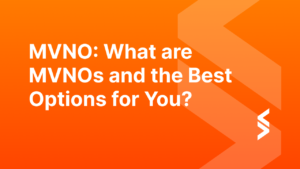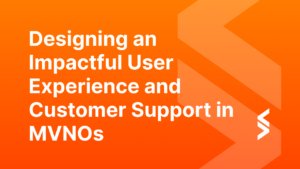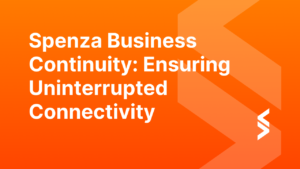
In the ever-evolving landscape of telecommunications, one thing is certain: connectivity management is at the heart of it all. What used to be a straightforward utility has now transformed into a complex web of services, intricately woven into the fabric of modern life. With the rapid adoption of the Internet of Things (IoT) and the proliferation of smart devices, mobile connectivity is no longer just a utility; it’s a necessity for managing everything from our daily lives to intricate business workflows. This transformation is not happening in isolation; it’s being driven by innovators like Spenza, who are reshaping the way we approach connectivity management. And the statistics speak volumes. By 2025, the IoT industry is projected to reach 30.9 billion IoT units, according to a Statista report. Let’s dive into the reasons why connectivity management is prime for a makeover and how integrated solutions are leading the way.
Connectivity Management is Siloed
Connectivity management as we knew it was siloed, divided into several distinct phases:
Procurement: Organizations had to negotiate with individual service providers for connectivity solutions, often constrained by predefined plans and offerings that didn’t always align with their specific needs. 2. Deployment: The process of deploying mobile connectivity was a
manual and often complex task, involving physical SIM card provisioning and manual service management workflows.
Payment/Spend Management: Managing telecom expenses was a passive process, typically involving monthly bill inspections, cost allocation, and offline dispute resolution with operators. This approach often lacked real-time visibility into expenses.
Connectivity Management is De-centralized
Moreover, connectivity management was often decentralized, spanning various levels within organizations:
Country Level: Organizations operating in multiple countries had to navigate different regulatory environments, carriers, and coverage challenges. This decentralized approach made it challenging to create a unified connectivity strategy.
Department Level: Within a company, various departments often managed their connectivity independently, leading to inefficiencies and potential duplications.
Tech Level: The complexity of different technologies, from 2G to 5G and beyond, added another layer of fragmentation to connectivity management.
Use Case Level: With the diverse use cases for connectivity, managing it effectively required bespoke solutions, creating a significant management challenge.
The Paradigm Shift
The traditional view of telecom services as standalone utilities that enable device communication has evolved. Today, mobile connectivity is deeply embedded in every product and service. This transformation is being led by innovative solutions like Spenza, which enable any business to launch branded connectivity experiences globally with just a few lines of API integration.
The Statista Report: A Glimpse into the Future
By 2025, the IoT industry is projected to reach 30.9 billion IoT units, according to a Statista report. This staggering number highlights the central role connectivity plays in our world. The IoT is no longer a buzzword; it’s becoming an integral part of our daily lives and the business landscape. Everything from smart homes and connected cars to industrial IoT applications relies on seamless and efficient connectivity management.
Integrated Connectivity Management: The Way Forward
So, why is connectivity management ripe for a makeover?
The answer lies in the increasing complexity and criticality of mobile connectivity. Traditional approaches simply can’t keep up with the demands of modern life and business.
Integrated connectivity management solutions are emerging as the way forward. They bring procurement, deployment, and spend management under one roof. This means organizations can streamline the entire process, from sourcing connectivity solutions to managing expenses, all in one centralized platform.
Moreover, integrated connectivity management offers a unified view across countries, departments, technologies, and use cases. This shift to integration empowers organizations to take full control of their connectivity management, ensuring a seamless and efficient approach.
Spenza: Shaping the Future of Connectivity Management
In this shifting landscape, innovative platforms like Spenza are at the forefront of connectivity management evolution. Spenza’s B2B “Telecom as a Service” platform is designed to simplify the way organizations manage cellular connectivity for modern devices. From wearables to IoT devices, Spenza offers a modern SaaS abstraction layer for managing telecom spend. It enables mid-size enterprises and new-age device manufacturers to purchase what they need and pay only for what they use, without worrying about operator lock-in, regulatory constraints, geographical limits, complex contracts, or opaque pricing.
Spenza’s full-stack solution includes an API-based MVNO enablement platform for subscription management, a curated marketplace of customizable mobile plans from leading operators worldwide, and an active telecom expense management SaaS for real-time spend optimization. With Spenza, device vendors and enterprises can resell and bundle custom mobile plans for their devices, embed connectivity solutions into their workflows, and save up to 30% on telecom costs.
The future of connectivity management is integrated, streamlined, and efficient, and Spenza is leading the charge in making this future a reality.
Conclusion
The world’s transition into the IoT era has underscored the critical importance of connectivity management. With the IoT projected to reach nearly 31 billion units by 2025, connectivity has become an integral part of our daily lives and business operations. Traditional siloed and decentralized approaches to connectivity management no longer suffice in this complex landscape
Integrated connectivity management is the paradigm shift the industry needs. By centralizing procurement, deployment, and spend management and offering a unified view across departments, technologies, and countries, it empowers organizations to regain control over their connectivity.
In this transformative landscape, Spenza is pioneering a modern approach to connectivity management. Its “Telecom as a Service” platform simplifies cellular connectivity for modern devices, providing a full-stack solution that optimizes spend and improves efficiency. The future of connectivity management is here, and it’s integrated.



